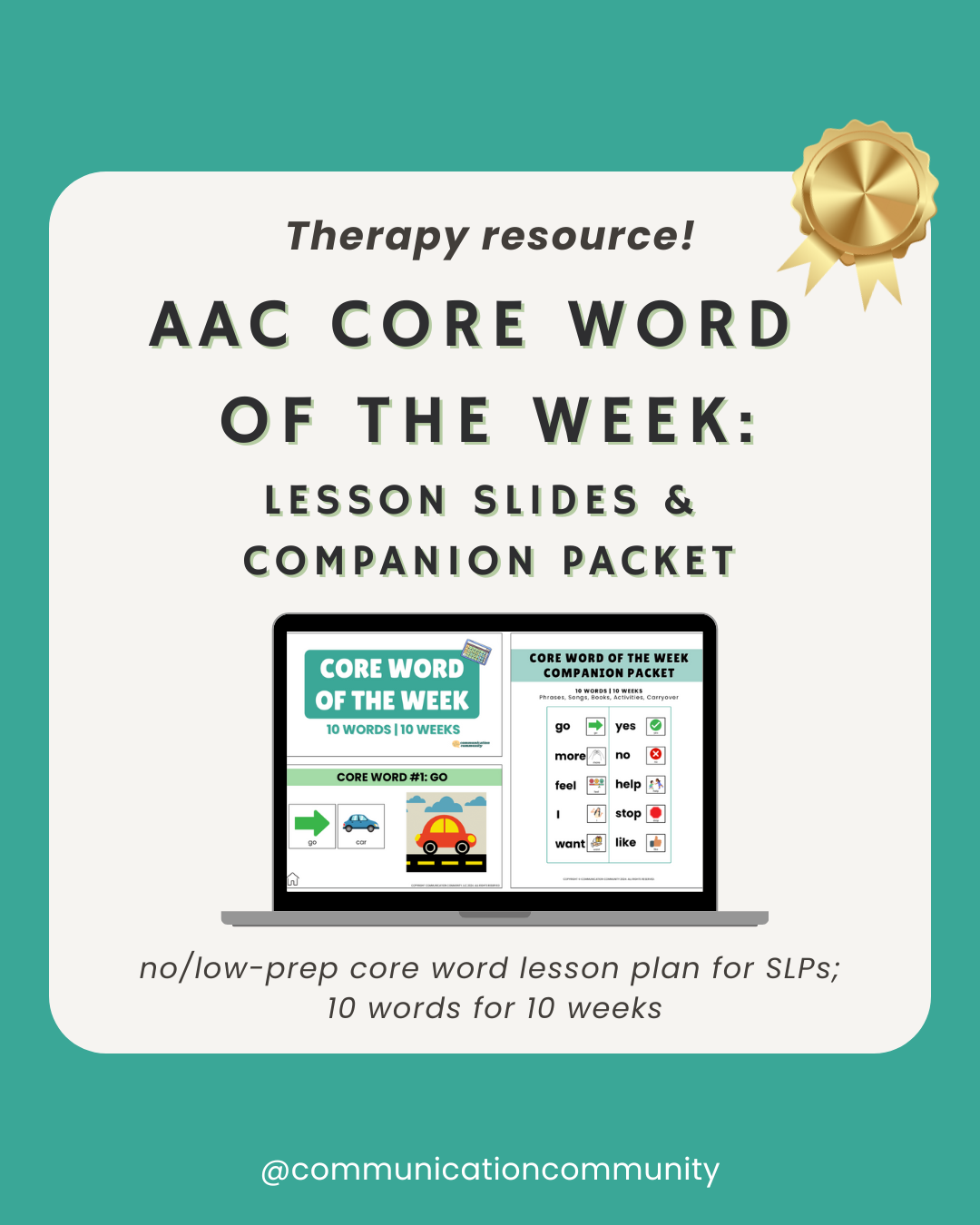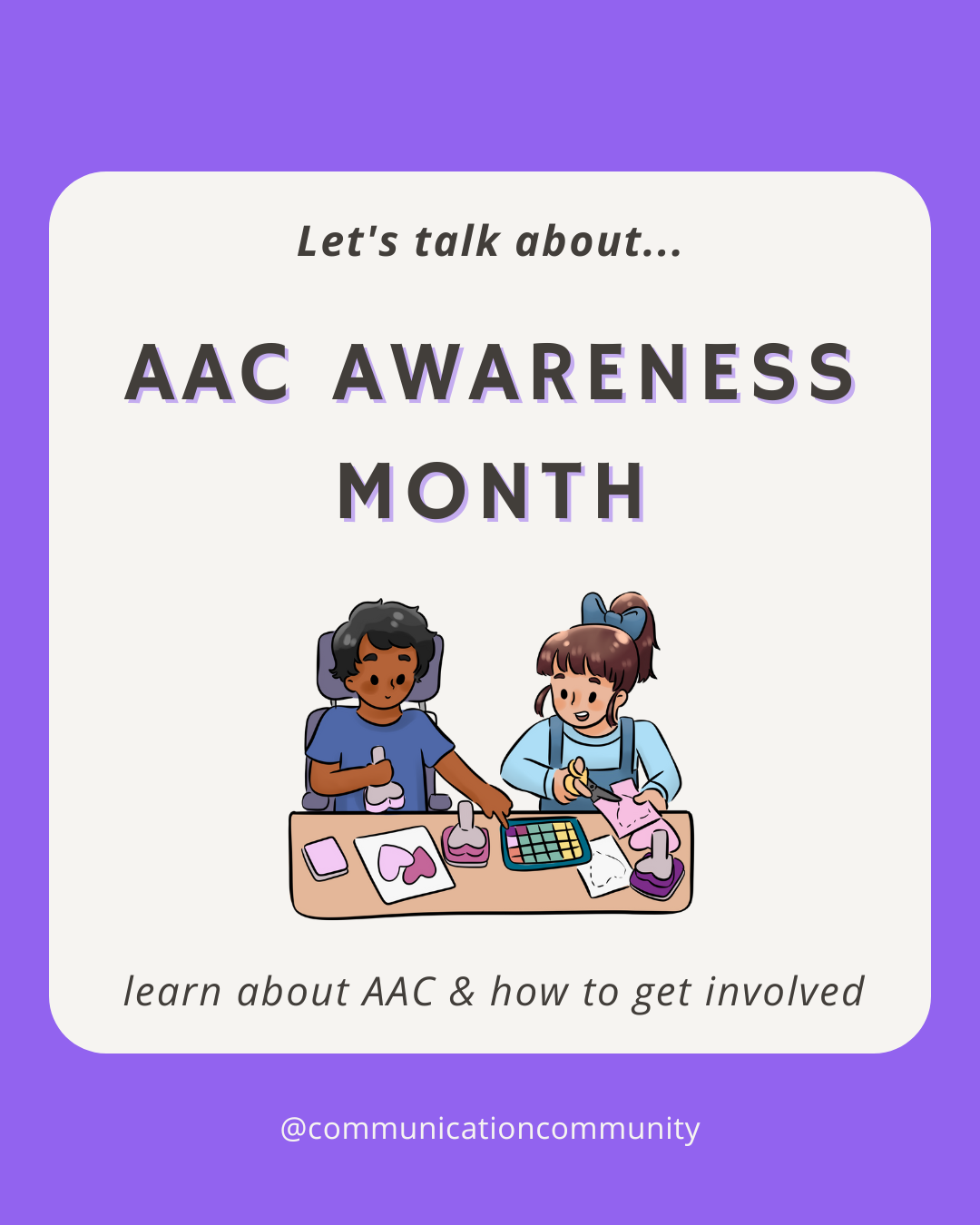Will Using AAC Stop My Child From Speaking?
The simple answer is “no” and we will tell you why.
As a speech-language pathologist (SLP), I have received the question presented above on numerous occasions. I have received this specifically when working with individuals with autism, who often present with global (mixed receptive-expressive) communication disorders; usually including apraxia of speech, which creates difficulty motor planning to produce intelligible (understandable) speech. Use of augmentative alternative communication (AAC) can increase the clarity of the message(s) the user wants to communicate. Though, it is not limited to individuals with autism; many individuals benefit from using AAC.
The current research and our own clinical experience has suggested that AAC will not stop a person from speaking.
AAC serves as a system or group of systems that allow for increased ability to communicate messages for any individual (child or adult) who presents with no/minimal verbal language and/or whose verbal speech is difficult to understand. Using AAC can increase an individual’s ability to get their message across to the individuals with whom they are interacting. Typically, you will find that SLPs are strong proponents for AAC because their goal is to maximize functional communication for the individuals they are providing services to, which can include both AAC and verbal language (speech). In many cases, individuals who use AAC are considered total communicators or multi-modal communicators, which means that they can use a variety of modalities interchangeably (think: verbal language and an AAC system) to communicate.
Different types of AAC and additional information can be found in the links below:
AAC is not shown to prevent verbal language: the research
The current research and our own clinical experience have suggested that AAC will not stop a person from speaking. In many cases, it actually does the opposite. It is our ethical obligation to the individuals we serve that as SLPs, we educate ourselves and follow a systematic protocol of evidence-based practice. What does that mean exactly? Well, as much as our independent clinical experience might prove to us that AAC does not prevent the individuals we are treating from speaking; we also realize we cannot just go from our gut. We are instructed to follow the research as well. Below we have included some research articles that have investigated this topic:
AAC and Families: Dispelling Myths and Empowering Parents
Effects of Augmentative and Alternative Communication Intervention on Speech Production in Children With Autism: A Systematic Review
Support for AAC Use in Preschool, and Growth in Language Skills, for Young Children with Developmental Disabilities
The Impact of Augmentative and Alternative Communication Intervention on the Speech Production of Individuals With Developmental Disabilities: A Research Review
Can AAC help a person speak?
It should also be noted that there is research to support that AAC can actually increase the development and use of verbal language and language learning for users. AAC systems are designed based on research that best supports functional use and development of language, and can be customized based on individual needs and abilities. Many high tech AAC systems (i.e., speech generating devices/SGDs) used by language learners are designed with a systematic core words approach that model the way that we develop natural language we use for speech production. Some of the newest SGD vocabularies systems are organized in this categorical fashion to increase efficient language use and access to communication. These SGD displays often provide visuals/symbols to support this, in addition to auditory models of accurate speech sound productions. Individuals who have already acquired language (usually adults) may use AAC due to brain injury, aphasia, or motor speech disorders. There are vocabulary systems on AAC devices that are more appropriate for them as well.
Overall, it is an SLPs goal to enhance one’s functional communication, whatever means involved. Many times it involves introducing an AAC system, other times it may not be deemed necessary. It may involve the collaboration of multiple modalities, like speech and AAC, to generate the most language output. It is always important to consider each client or loved one on an individualized basis based on their life circumstances, wants, and needs. AAC has continued to advance and research is clear that AAC should be introduced as early as possible and can impact important developmental outcomes when used at home (Smith, Barton-Hulsey, Nwosu, 2016).
Citations/further resources:
https://www.assistiveware.com/learn-aac/roadblock-aac-will-stop-a-person-from-learning-to-speak
https://pubs.asha.org/doi/pdf/10.1044/1058-0360%282008/021%29
https://pubs.asha.org/doi/pdf/10.1044/persp1.SIG12.10
https://pubs.asha.org/doi/pdf/10.1044/1092-4388%282006/021%29

![Does AAC Prevent Speech Development? [with research articles]](https://www.communicationcommunity.com/content/images/2021/03/Does-AAC-Prevent-Speech-Development--2-.png)

![How to Write AAC Goals [with goal bank]](https://www.communicationcommunity.com/content/images/2024/03/How-to-Write-AAC-Goals---ghost-cover.png)
![How to Write Neurodiversity-Affirming Speech Therapy Goals [with goal bank]](https://www.communicationcommunity.com/content/images/2023/12/How-to-Write-ND-Goals---ghost-cover.png)

![What is Modeling Without Expectation? [AAC resource]](https://www.communicationcommunity.com/content/images/2023/03/1.png)
